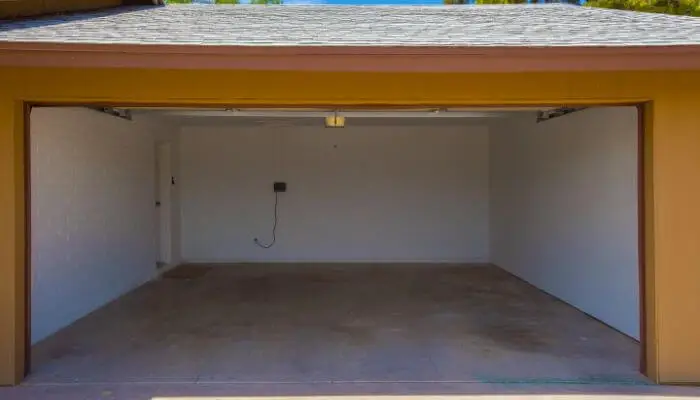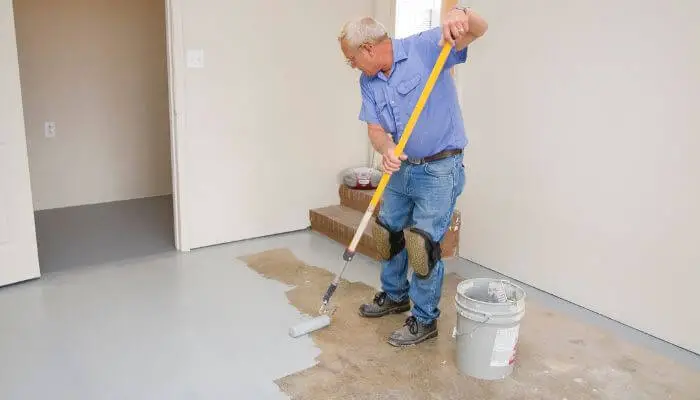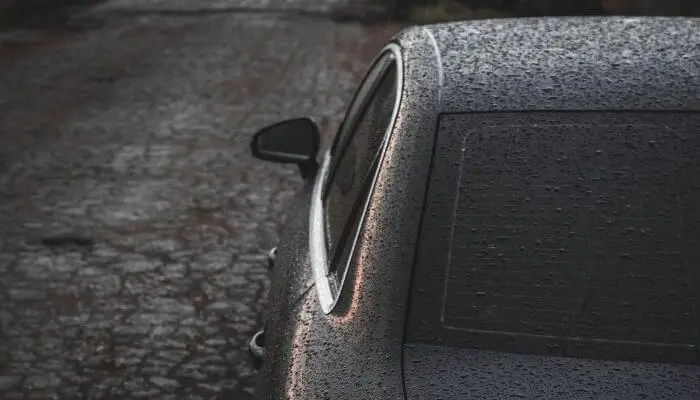Just because your garage has been waterproofed doesn’t mean it will necessarily remain dry inside.
Condensation can still form in the most watertight of garages, over time this can cause damp-related issues such as mold or water damage to stored items.
Doing so will put you at ease because you will never worry about mold, condensation, and of course, moisture.
1. Use a Garage Door Threshold
Thresholds cover gaps between the floor and your door. If you can see visible gaps in your garage door, installing a threshold will cover them. Additionally, it will prevent water from entering your garage.
To install the threshold, just follow these steps:
- Open your garage door, then center the threshold between the garage door track.
- Trim the threshold according to the length of your garage.
- Mark the inside and outside of the entire threshold with a pencil.
- Remove the threshold, then put adhesive on the markings you created.
- Put the threshold in place.
- Close the garage door to put pressure on the threshold for 24 hours.
2. Fit a Garage Door Side Seal
Similar to a threshold, side seals cover the gaps in your door. This prevents water from entering the garage, especially when it’s raining hard. A garage door side seal also prevents the wearing and tearing of your garage door due to the weather, which can lead to further damage.
To properly fit a garage door side seal, follow these steps:
- Measure the length of your garage door.
- Cut the seal to the desired length, and pre-drill the holes in the seal if there are none.
- Hold the seal in its position in the garage door, then mark through the holes with a pencil.
- Drill the marks, then screw the seal into its place.
- Trim the seal if necessary.
3. Insulate the Garage Walls
Insulating your garage walls results in a balanced room temperature which reduces condensation problems.

To insulate your garage follow these steps:
- Clean the walls before installing insulation.
- Apply a sealant to cover the cracks and holes, then let it dry.
- Cut the insulation to the desired size.
- Fit the insulation to the walls.
- Apply a vapor barrier, then secure it to place by stapling.
4. Insulate the Garage Door
An insulated garage door creates an airtight seal. This means the inside of your garage isn’t affected by the weather outside. This controls the temperature and prevents moisture from happening.
Aside from insulation kits, you can use foam boards such as expanded polystyrene. To install, just follow these steps:
- Clean your garage door panels before installing them.
- Cut the insulator and batting to the desired size.
- Mark the location on the panel where the retainer pins will go.
- Stick the retainer pins onto the marked spots using the back adhesive.
- Place the insulator batting along with the insulation on the garage door panel.
- Push them in until the retaining pin pokes them.
- Push the retaining cap over the retaining pin.
5. Ensure It Is Well Ventilated
Along with insulation, adding ceiling fans or garage ventilation fans will help circulate air.
It also increases the airflow, especially if you have windows in your garage. This will prevent damage to your garage flooring due to rainwater and melted snow.
6. Remove The Fridge/Freezer From The Garage
If your garage isn’t insulated, you should relocate your fridge or freezer. Extreme temperatures will affect your fridge. When the temperature gets way too cold, your freezer might thaw out.
This might cause puddles in your garage, which can lead to condensation, moisture, and of course, mold.
7. Paint The Floor
Painting your floor with an epoxy coating is a good preventive measure. It prevents floor deterioration whenever there are water and ice spills, oil spills, battery leakages, etc.

Concrete floors are very porous and can soak all sorts of liquid which, in the long run, gets damaged. If you don’t want your floor to get spalled and cracked, painting it is the right solution.
8. Dry Moisture Off The Car When You Bring It In
There many of reasons that cause moisture in your car. You might have forgotten to close the windows, or you might have left wet clothes inside.

You can easily remove moisture by turning on your car’s defroster or air conditioner. There are vents in your car that help moisture escape.
9. Use A Dehumidifier
A dehumidifier is the quickest way to deal with humidity because it prevents moisture and condensation. It also balances the moisture level, which is good for your garage, especially if it’s not properly ventilated.
There are various dehumidifiers you can buy online such as the Waykar Dehumidifier.
Alternatively, you can use things such as cat litter, baking soda, and charcoal to absorb moisture from the air.

